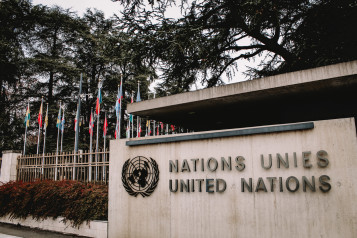Publication
Alberta Energy Regulator calls for feedback on amendments to Directive 067
Published February 5, 2021
Rumours have abounded for months about a forthcoming overhaul of the regulatory framework surrounding abandonment and reclamation obligations (AROs) for Alberta's oil and natural gas industry. Over the past several years, it has become clear that the Courts, the Government of Alberta and the Alberta Energy Regulator (AER) view the Licensee Liability Rating (LLR) program to be an inadequate measure of licensees' financial health and eligibility to hold and transfer licences.
New LMF announced in July with limited details
In July 2020, the news broke that the LLR would be replaced with a Liability Management Framework (LMF), billed as a solution to the shortcomings of the LLR program. At that point, the Government released a statement and factsheet that outlined the high-level changes brought about by the revamped regime. The primary changes announced in July included the following:
- the LLR is to be replaced by a Licensee Capability Assessment System which will consist of a "more comprehensive and accurate corporate health assessment by taking into account a wider variety of assessment parameters" in addition to the productive value of assets and the outstanding reclamation liabilities;
- new minimum spending requirements on AROs;
- a forum for landowners to "opt-in" and nominate sites on their land to be prioritized for reclamation; and
- a panel for attributing responsibility and coordinating the care of legacy and post-closure sites.
These changes dovetail into the expanded jurisdiction of the Orphan Well Association (OWA), which was announced in June 2020 and includes powers to operate orphan wells, contract with third parties with respect to the AROs of orphan wells, and apply to the Alberta Court of Queen's Bench to assign insolvency professionals to take control of orphaned assets.
Legislative changes allowing for the implementation of the LMF introduced in December 2020
It was not until the end of December 2020 that Alberta's energy legislation saw amendments that allowed the AER to begin implementing the LMF through its Directives. The Government of Alberta amended the Oil and Gas Conservation Rules, and the amendments include:
- empowering the AER to:
- direct the timing and priority for performing closure work on licensees' wells and facilities;
- establish closure quotas setting out the required amount of work to be done or the amount to be spent (or both) on the closure of licensees' wells and facilities, as directed and within the time frame determined by the AER;
- request that licensees submit closure plans at the AER's direction; and
- request that licensees provide the AER with financial and reserves information;
- adding a definition of "closure" that includes the abandonment and reclamation of wells, facilities, well sites and facility sites;
- introducing a new scenario where a licensee would be required to abandon a well or facility "pursuant to timelines set out in Directives";
- introducing a new requirement whereby licensees are required to prepare closure plans for wells or facilities that have been in an inactive or abandoned state for five or more years;
- adding a definition of "eligible requester", which encompasses third party landowners on whose property abandoned wells may be situated, and includes landowners, holders of public lands dispositions, the Minister of Energy, Band Councils, Metis settlements and Municipalities; and
- empowering eligible requesters to apply to the AER to request that a licensee with assets on the eligible requestor's property be required to submit a closure plan.
Draft Directive 067 introduced in January 2021 to implement reporting requirements of new the regime
With the changes to the OGC Rules in place, the AER has begun amending its Directives to implement the changes announced in July. Directive 067 is the Directive that sets the rules around applying for, maintaining, and amending licence eligibility. In mid January 2021, the AER published a draft of an amended Directive 067 (the Draft Directive).
The changes introduced by the Draft Directive include building on the existing corporate and financial disclosure requirements for parties who wish to acquire, hold, maintain or transfer licences in Alberta, and broadening the AER's discretion to withhold or revoke licensees' privileges if they are assessed as posing an "unreasonable risk" of leaving assets to be assumed by the OWA. Notable changes introduced in the Draft Directive include:
1. Increased financial disclosure
- Licensees and approval holders must provide financial statements and a financial summary annually within 120 days of their fiscal year-end.
- The financial statements required by the AER are to be fully audited, but in the event that audited financials are not available, the AER may accept management-prepared statements;
- applicants for licence eligibility must provide:
- a financial summary and their most recent financial statements;
- in the case of a new applicant with no financial history, details of financing;
- in the case of applicants who are a subsidiary of another company, the parent company's financial statements and financial summary (it is unclear if this applies to all corporate shareholders); and
- the Draft Directive introduces a new "financial summary" schedule, to be submitted to the AER along with financial statements as described above. The disclosure on the financial summary includes revenues, a licensee's operating and other expenses and their cash flows from operations, investments and financings;
2. Assessing "reasonable risk"
The Draft Directive enumerates new factors that the AER must consider in its determination to grant licences or approvals, with the threshold for rejection being "unreasonable risk". The AER has the discretion to examine and request information on a new or existing licensee or approval holder's:
- compliance history, including its directors, officers and shareholders in Alberta and elsewhere;
- compliance history of entities currently or previously associated or affiliated with the licensee approval holder's its directors, officers or shareholders;
- experience of the licensee or approval holder and its directors, officers and shareholders;
- corporate structure;
- working interest participant arrangements, including participant information and proportionate shares;
- financial health, including the liquidity and liabilities of entities currently associated or affiliated with the licensee or approval holder, or its directors, officers, and shareholders;
- assessed capability to meet its regulatory and liability obligations throughout the energy development life cycle;
- assessed ability to provide reasonable care and measures to prevent impairment or damage to its oil and gas assets;
- outstanding debts owed to AER or the OWA by the licensee or approval holder or by current or former licensees that are directly or indirectly associated or affiliated with the licensee or its directors, officers or shareholders;
- involvement of the licensee or its directors, officers or shareholders in entities that have initiated or are subject to insolvency proceedings;
- cancellation of or significant reduction to insurance coverage;
- directors, officers, or shareholders being named in a declaration made under section 106 of the Oil and Gas Conservation Act and section 51 of the Pipeline Act; and/or
- any other factor the AER considers appropriate in the circumstances.
3. Maintaining eligibility
The Draft Directive maintains Directive 067's requirement to advise the AER of material corporate changes, and adds to the list of changes that require AER notification "changes to shareholders directly or indirectly holding 20 per cent of the outstanding voting securities of the licensee or approval holder".
The Draft Directive introduces a requirement for licensees or approval holders to register an official email address for AER correspondence. The Draft Directive mandates that licensees or approval holders notify the AER immediately if:
- their contact information changes;
- they initiate or are subject to insolvency proceedings; and/or
- their insurance coverage is cancelled or significantly reduced.
A deadline for the "immediate" notification to the AER above was not included in the Draft Directive.
Overall, the Draft Directive creates disclosure requirements for participants and prospective participants in Alberta's oil and natural gas industry that go far beyond a company's ability to conduct oil and natural gas operations. It is unclear how the AER will weigh all of the information that it will obtain in assessing eligibility, and how it will process applications efficiently given the increased breadth of the application requirements.
The AER and has issued a call for feedback on the Draft Directive that will be open until February 14, 2021. The feedback that the AER receives will be considered in the determination of the final revised Directive 067. We will provide an update when the AER introduces the new Draft Directive
Further changes to Alberta's regulatory regime may be forthcoming to implement the rest of the LMF program
The rollout of all of the changes announced in July may require further legislative amendments, and will require additional changes to the AER's Directives. We continue to monitor the following elements of the LMF program announced in July, which have not yet been implemented:
- the licensee capability assessment system (the LCA), set to replace the LLR calculations, which the AER describes as an evaluation that will entail reviewing more information than "strictly liabilities versus assets". The AER has indicated that the LCA will be an assessment of a company's financial capability, along with their closure, administrative, operational, and compliance history. The AER has set a target of mid-2021 for the implementation of the LCA.
- "Licensee Special Action", described as additional support from the AER for licensees assessed to be nearing distress;
- the payment structure for licensees' mandatory reclamation spending, which the government has indicated to be approximately 4% of a licensee's AROs, assessed and payable over five-year spending targets;
- the details of a "forum" for eligible requesters to nominate sites on their land to be prioritized for closure; and
- the details of a panel tasked with managing legacy and post-closure sites.
We expect more information to be released in the days and weeks to come, and will provide additional commentary when more details are available. For further guidance and advice, please reach out to our Energy Group.



